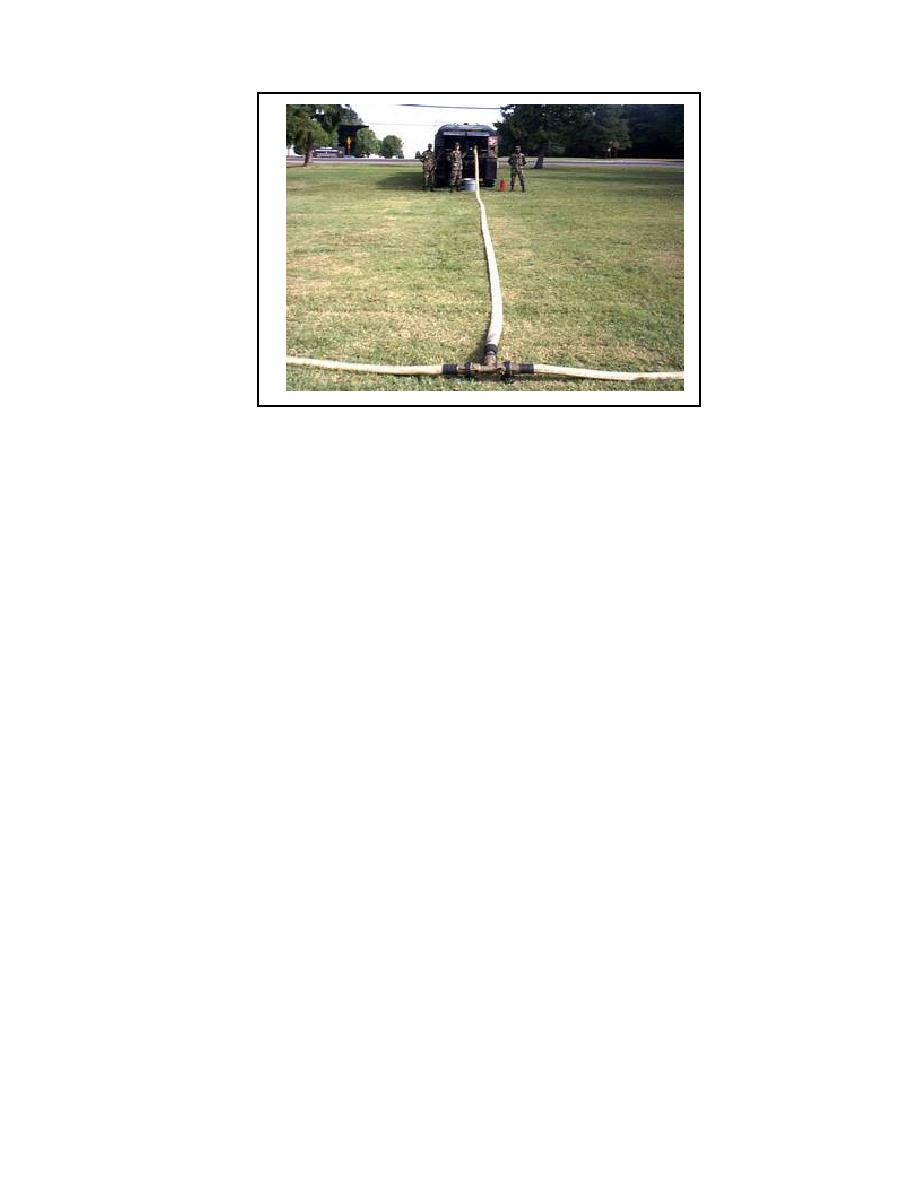
Figure 7-2. HTARS setup.
PART C - OPERATION
Preparation for Operation. Ensure all safety and environmental precautions have been taken. Verify
that all safety and fire-fighting equipment is in place and serviceable. Check landing lights if they are
required. Perform daily and before operations PMCS on the HEMTT tanker IAW TM 9-2320-279-10-1
(Operator's Manual, Volume No. 11 for M977 Series 8x8 Heavy Expanded, Mobility Tactical Trucks
(HEMTT)) and on the HTARS TM 5-4930-237-10. Inspect the discharge hoses, valves and fittings, nozzles,
and grounding systems. Ensure that all refueling personnel are wearing the proper protective clothing. As
soon as the system is full of fuel and ready to operate each day, draw a sample from each nozzle. If the fuel
does not pass tests and inspections. Do not use it. Isolate, resample, and send the fuel sample to the
supporting laboratory, and await the laboratory's instructions on disposition.
Sequence of Operations. The HTARS has two primary modes of operation, refuel and recirculation.
In the refueling mode, fuel is pumped from the HEMTT tanker through the system hoses to the refueling
points (nozzles). In the recirculation mode, the refueling nozzle (CCR or D-1) is disconnected from the
refueling point and the recirculation nozzle is connected. The recirculation nozzle is connected to the
HEMTT tanker and fuel circulates through the system hoses and back to the tanker. The HTARS can
operate in both modes at the same time.
Refueling mode. To operate the HTARS in the refueling mode, follow these procedures:
Start and operate the HEMTT tanker IAW TM 9-2320-279-10-1.
Ensure the soldier manning the nozzle guides the aircraft into position using signals. Check with the pilot
to be sure that all armaments are on SAFE.
Deplane the crew and passengers. Passengers must go to the designated passenger marshaling area.
Members of the crew, except the pilot or copilot who may remain at the controls if necessary, should
deplane and assist with the refueling, and place it within reach of the aircraft fill port.
Ensure the pilot notifies his commander that he will be off the air during refueling. He may monitor his
radios during refueling but he should never transmit. The crew chief and pilot may talk by intercom
during refueling.
NOTE: Ground the aircraft. Grounding of aircraft during refueling is no longer required by NFPA standards
77 and 407. Grounding will not prevent sparking at the fuel surface.
Bond the nozzle to the aircraft in one of two ways. Either by inserting the bonding plug into the plug
receiver or attaching the clip of the nozzle bonding cable to a bare metal part of the aircraft other than
the antenna.
7-4
QM 5094



 Previous Page
Previous Page
